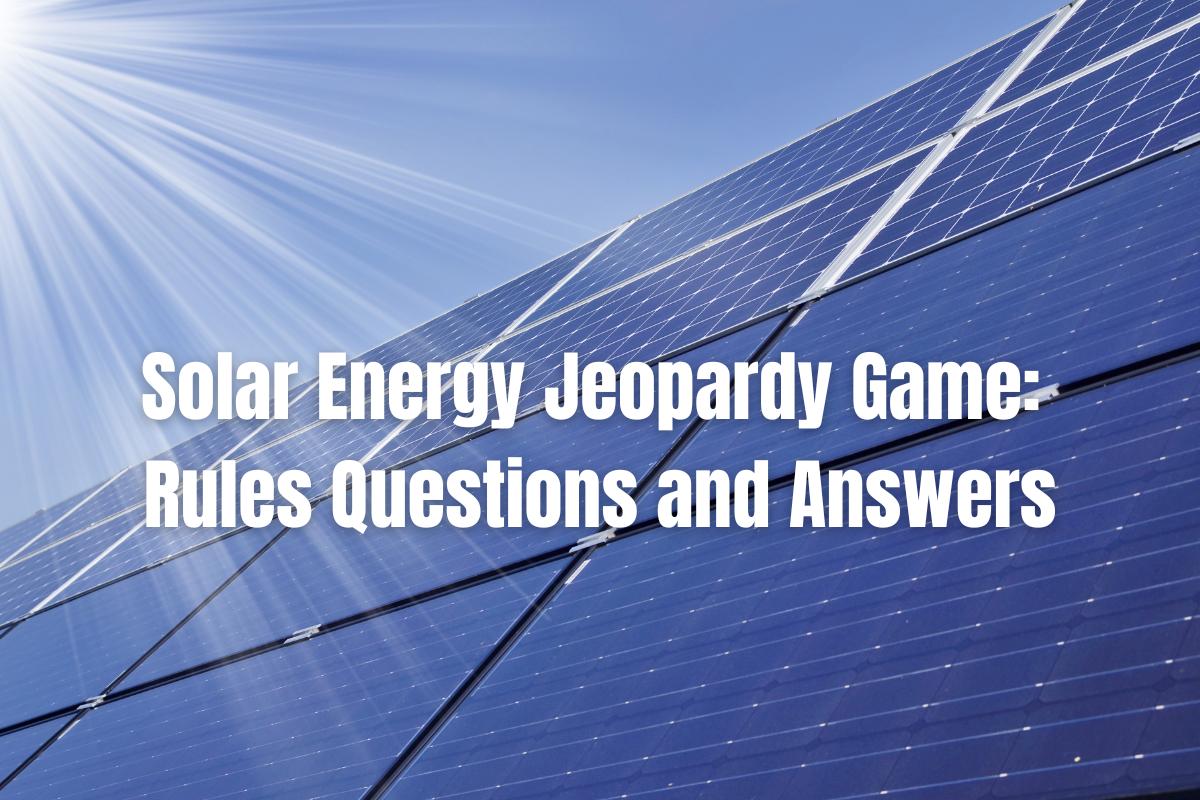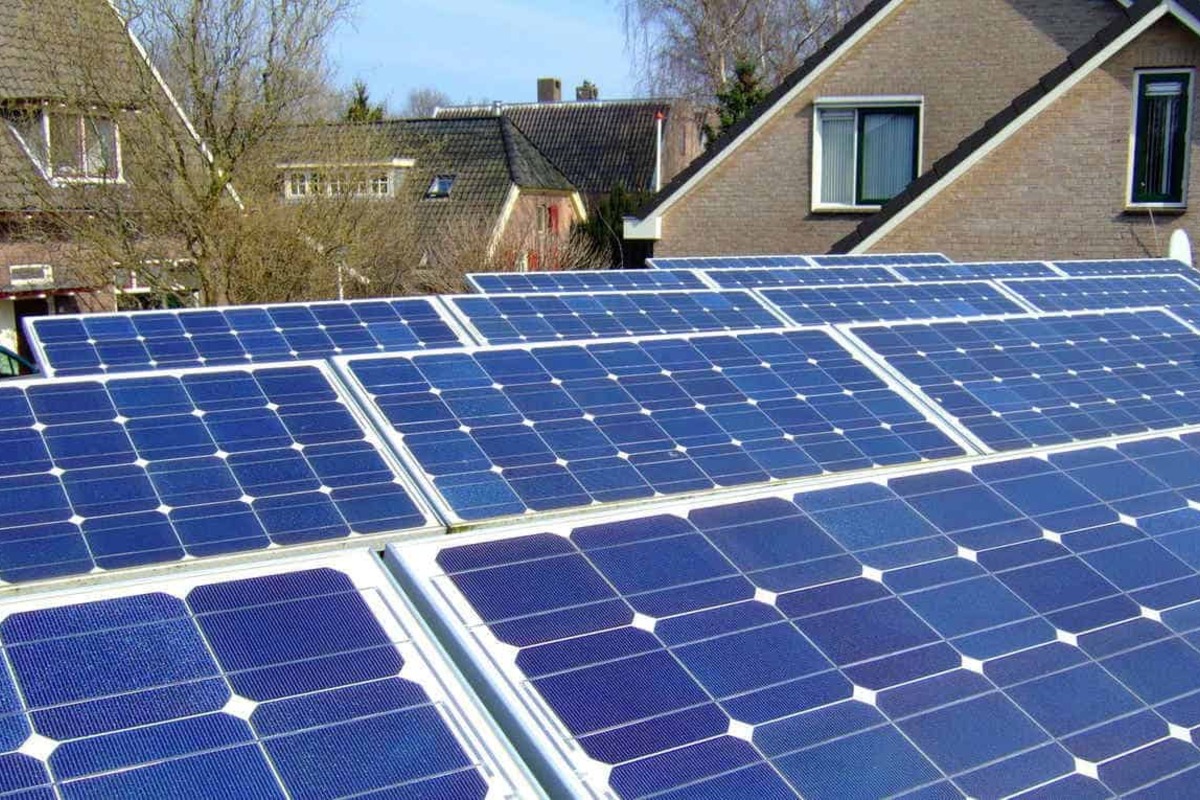Welcome to Solar Energy Jeopardy, where we’ll dive into the exciting world of solar technology and its impact! Today, we’ll explore everything from basic concepts and innovations to historical milestones and global initiatives across six dynamic categories. Get ready to challenge your understanding of the classroom Jeopardy rules and have some fun while learning about the power of the sun!
Classroom Jeopardy Rules
Start by dividing the students into teams or letting them play individually, which encourages both collaboration and individual participation. As the game host, you’ll present different categories related to solar energy. Teams take turns selecting a category and a point value to reveal a clue. The excitement builds as students buzz in to answer, but they must remember to phrase their responses as questions. For instance, if the clue is “This device captures the sun’s energy and converts it into electrical power,” a student should respond, “What is a solar panel?”
Scoring keeps the game engaging, with teams earning points for correct answers and losing points for incorrect ones. This keeps everyone on their toes, strategizing whether to play it safe or risk bigger point values for a chance to lead.
The game progresses through rounds, starting with the Jeopardy round, which features lower point values. You can introduce a Double Jeopardy round with doubled point values to spice things up. Consider adding a couple of ‘Daily Doubles’ where teams can wager any amount of their current score on a single clue, adding a layer of suspense.
Conclude with a Final Jeopardy round involving a single, challenging clue. Here, teams wager a portion of their score before hearing the clue, which can dramatically change the game’s outcome. This final round tests their knowledge and strategic thinking in a thrilling climax to the game.
With categories spanning the basics of solar technology to its environmental impact, the game is not just fun but educational, enriching students’ understanding of solar energy and its significance in today’s world.
Let’s move on to creating some specific categories and clues for your Solar Energy Jeopardy game!
Solar Energy Jeopardy Categories and Clues
Category 1: Solar Basics
100 Points: This is the form of energy directly harnessed from sunlight.
Answer: What is solar energy?
200 Points: This material, commonly used in making solar panels, is also found in sand.
Answer: What is silicon?
300 Points: These units measure the power output of solar panels.
Answer: What are watts?
400 Points: This type of solar technology generates heat from solar energy.
Answer: What is solar thermal?
500 Points: This is the process by which light is converted directly into electricity.
Answer: What is photovoltaic effect?
Category 2: Applications of Solar Energy
100 Points: This type of solar product is often installed on rooftops to generate electricity.
Answer: What are solar panels?
200 Points: This solar structure tracks the sun’s movement to increase efficiency.
Answer: What is a solar tracker?
300 Points: These portable solar-powered devices are often used for charging phones and other gadgets when camping.
Answer: What are solar chargers?
400 Points: This large-scale solar installation is similar to a power plant and generates electricity for many homes.
Answer: What is a solar farm?
500 Points: This innovation stores solar energy for use when the sun isn’t shining.
Answer: What are solar batteries?
Category 3: Environmental Impact
100 Points: This is the primary benefit of using solar energy over fossil fuels.
Answer: What is reducing carbon emissions?
200 Points: Solar energy does not produce this, which is common in burning fossil fuels.
Answer: What are air pollutants?
300 Points: This long-term environmental benefit comes from widespread use of solar energy.
Answer: What is decreased reliance on nonrenewable resources?
400 Points: This is a concern regarding the disposal of old solar panels.
Answer: What is waste management?
500 Points: This term describes the net environmental benefit of products, including solar panels, across their lifecycle.
Answer: What is sustainability?
Category 4: Solar Innovations
100 Points: This is a flexible, lightweight solar cell that can be integrated into cloth and wearable accessories.
Answer: What is a solar fabric?
200 Points: This emerging solar technology uses organic materials to create solar cells.
Answer: What are organic photovoltaics?
300 Points: This breakthrough technology allows solar panels to absorb light from both their front and back sides.
Answer: What is bifacial solar technology?
400 Points: This type of solar cell is designed to mimic the natural process of photosynthesis.
Answer: What are artificial photosynthetic systems?
500 Points: This technology enhances the efficiency of solar panels using mirrors to concentrate sunlight.
Answer: What is concentrated solar power (CSP)?
Category 5: History of Solar Energy
100 Points: This ancient civilization is known for using passive solar design in their architecture.
Answer: What are the Anasazi Indians?
200 Points: In 1839, this French physicist discovered the photovoltaic effect which is the basis of solar panels today.
Answer: Who is Edmond Becquerel?
300 Points: This U.S. President installed solar panels on the White House in the late 1970s.
Answer: Who is Jimmy Carter?
400 Points: This space mission, launched in 1958, was one of the first uses of solar technology in space.
Answer: What is Vanguard 1?
500 Points: This historical development during the 7th century B.C. involved using sunlight to light fires with magnifying glass materials.
Answer: What is solar ignition?
Category 6: Solar Around the World
100 Points: This country leads the world in total installed solar capacity, making it a major player in solar energy.
Answer: What is China?
200 Points: Known for its massive investment in renewable energy, this Middle Eastern country has a significant solar power project called Noor Abu Dhabi.
Answer: What is the United Arab Emirates?
300 Points: This European country is a leader in solar energy efficiency and often meets a substantial portion of its electricity demands through solar power.
Answer: What is Germany?
400 Points: This country set the record for the lowest cost solar power in 2020.
Answer: What is Saudi Arabia?
500 Points: This South American country is notable for its Atacama Desert, where some of the world’s most powerful solar parks are located.
Answer: What is Chile?
Enjoy your Solar Energy Jeopardy game!




